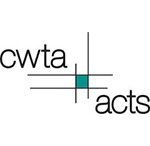Posted: Nov 1 '15

Breathing is an essential function, and when air is contaminated or unsafe to inhale, there's nothing more frightening. In many occupations the simple act of breathing could put a person at risk. Whether there are chemicals present in the air, or not enough oxygen, self-contained breathing apparatus (SCBA) are a lifeline. While this type of equipment may seem simple to use, it's necessary for employees to complete SCBA training.
Imagine the selfless act of rushing into a burning building to save a home, business, or even a life. Firefighters train extensively to battle blazes, be aware of hazards inside burning structures, and to utilize various tools to fight fires. One of the most important tools at their disposal are SCBA's. When air becomes thick with smoke, anyone trying to breathe can become incapacitated within moments. But with proper SCBA training, firefighters can enter the blaze for longer periods of time to pull people out of harm's way.
The ability to function in “bad air” is also necessary in many other fields such as mining, petrochemical, chemical, and nuclear operations where toxic substances such as H2S may be present. The use of self-contained breathing apparatus for firefighting or for industrial use is not to be taken lightly. Understanding the types of apparatus, how they work, how to wear them, and how to inspect them is vital. SCBA training provides the know-how that allows employees to feel secure and to ensure that operating such devices is done properly.
SCBA units are typically made up of a tank or cylinder of air, regulator, carrying device, gauge, safety valve, and mouthpiece or full -face mask.
An open-circuit SCBA takes any exhaled air and vents it out of the mask into the atmosphere.
Less commonly used today are the closed circuit SCBA, which is operated by filtering and reusing the breath of the person wearing the apparatus.
Self-contained breathing apparatus have an alarm that goes off when the air tank is getting low. Some apparatus also include a personal alert safety system, or PASS device. These signals are also known as ADSU or Automatic Distress Signal Unit and can alert others that the wearer is in trouble. These devices can be self-activated, or will go off automatically if the wearer remains completely immobile for a period of time.
Because SCBA's may differ depending on the manufacturer, employees must receive SCBA training based on the manufacturer's instructions. This includes the inspection procedures prior to donning the device.
The cost of such vital equipment is well worth the investment. While firefighting gear typically has a higher price tag due to the flame-proof materials that must be used, these units can cost several thousand dollars each. In the scheme of things, the ability to function in a difficult breathing environment, or to protect the health and lives of employees is worth every dollar.
If your employees could be in danger of inhaling H2S or other toxic substances, smoke, or other hazardous air, then come to us for SCBA training in Edmonton and breathe easy.
**** Source: http://www.uic.edu/sph/glakes/confined_space/mod6/m6p5e.htm REQUEST INFO ON OUR COURSES



